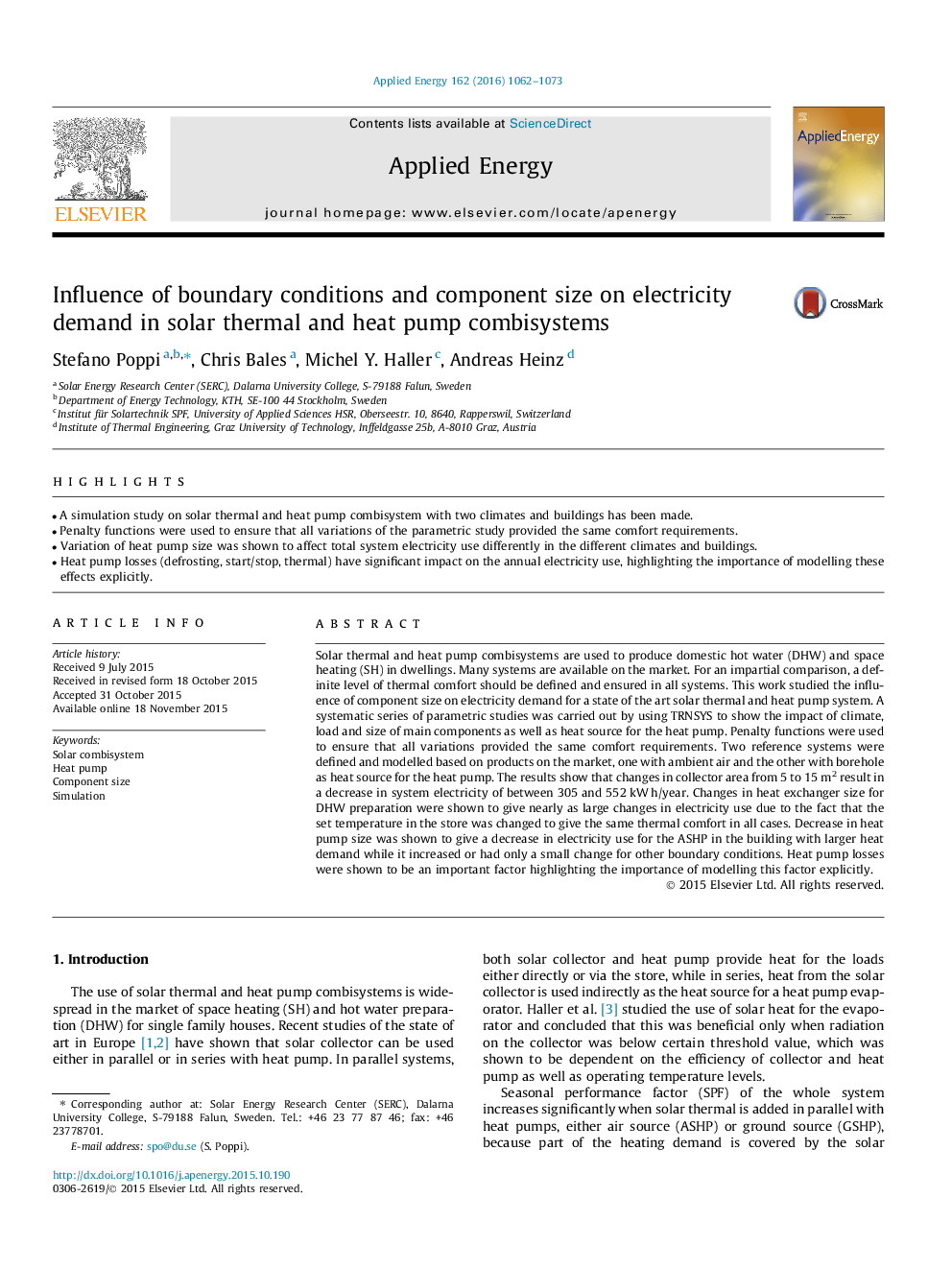| Article ID | Journal | Published Year | Pages | File Type |
|---|---|---|---|---|
| 6684896 | Applied Energy | 2016 | 12 Pages |
Abstract
Solar thermal and heat pump combisystems are used to produce domestic hot water (DHW) and space heating (SH) in dwellings. Many systems are available on the market. For an impartial comparison, a definite level of thermal comfort should be defined and ensured in all systems. This work studied the influence of component size on electricity demand for a state of the art solar thermal and heat pump system. A systematic series of parametric studies was carried out by using TRNSYS to show the impact of climate, load and size of main components as well as heat source for the heat pump. Penalty functions were used to ensure that all variations provided the same comfort requirements. Two reference systems were defined and modelled based on products on the market, one with ambient air and the other with borehole as heat source for the heat pump. The results show that changes in collector area from 5 to 15Â m2 result in a decrease in system electricity of between 305 and 552Â kWÂ h/year. Changes in heat exchanger size for DHW preparation were shown to give nearly as large changes in electricity use due to the fact that the set temperature in the store was changed to give the same thermal comfort in all cases. Decrease in heat pump size was shown to give a decrease in electricity use for the ASHP in the building with larger heat demand while it increased or had only a small change for other boundary conditions. Heat pump losses were shown to be an important factor highlighting the importance of modelling this factor explicitly.
Keywords
Related Topics
Physical Sciences and Engineering
Energy
Energy Engineering and Power Technology
Authors
Stefano Poppi, Chris Bales, Michel Y. Haller, Andreas Heinz,
